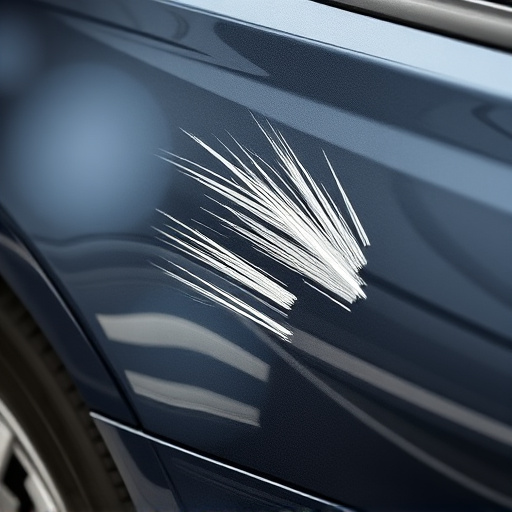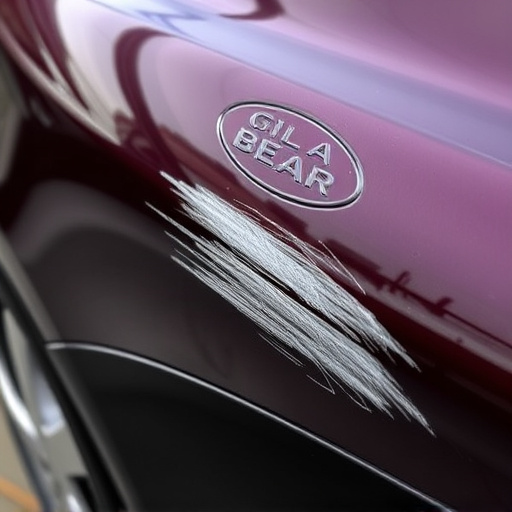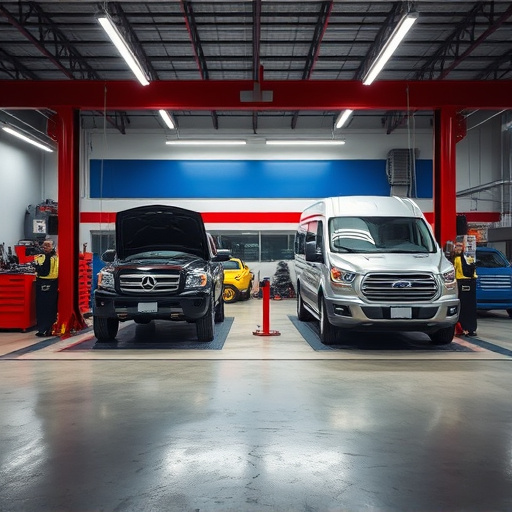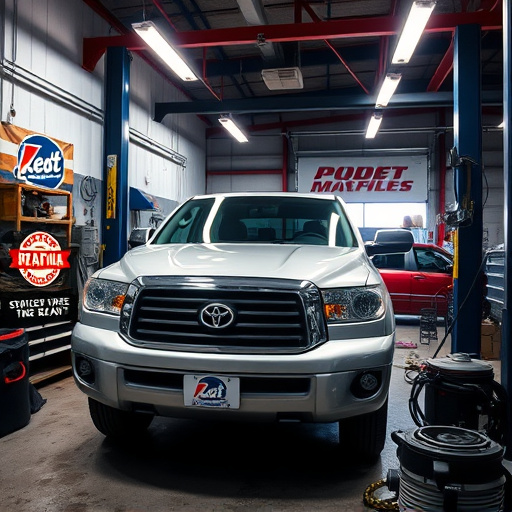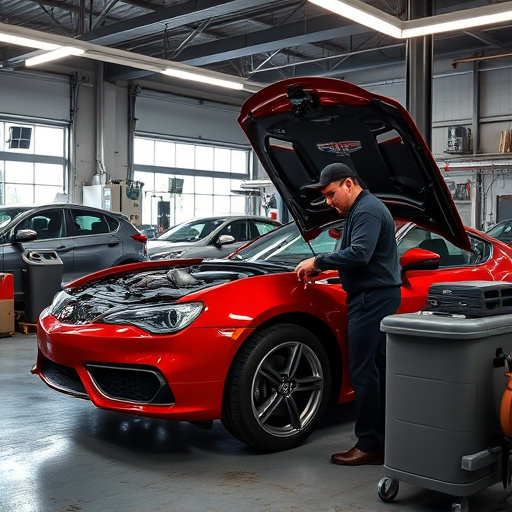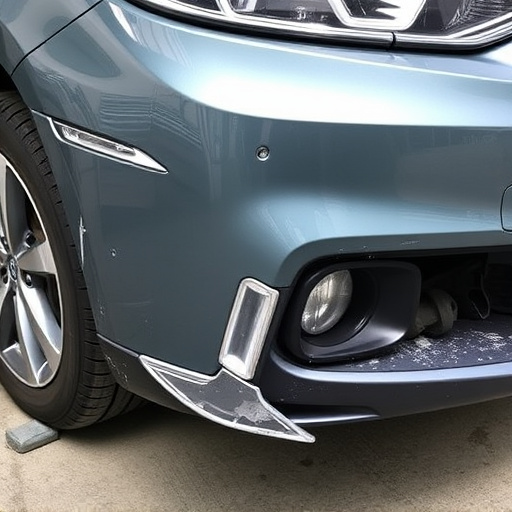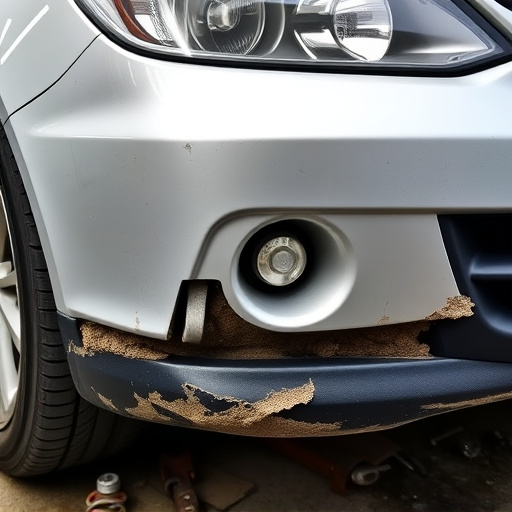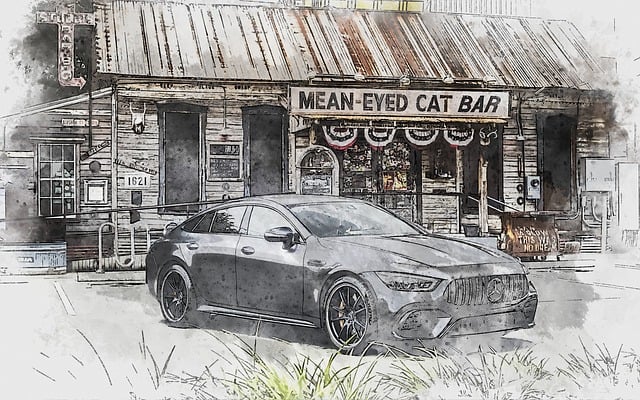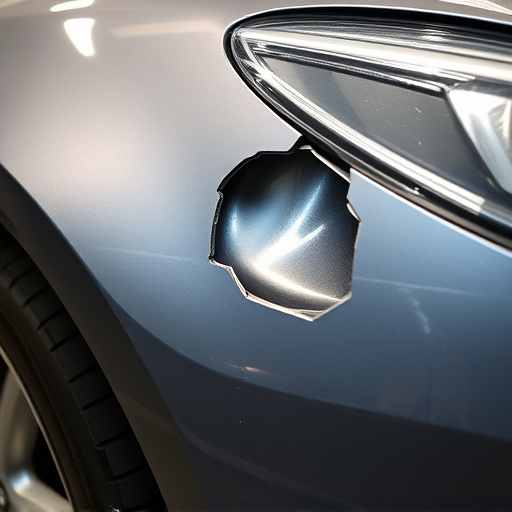Waterborne paint technology is transforming auto repairs with its environmental benefits, superior performance, and safety features. This technology offers better adhesion, faster drying times, and enhanced durability compared to traditional paints, while also reducing volatile organic compound (VOC) emissions and creating a safer workshop environment. The meticulous application process involves surface preparation, advanced equipment, and careful curing for flawless finishes that match original vehicle aesthetics, making it a sustainable and effective choice in modern auto body shop repairs.
Waterborne paint technology has emerged as a game-changer in auto repairs, offering a sustainable and efficient solution for restoration. Understanding this innovative approach involves delving into its unique benefits, from improved environmental impact to enhanced durability. This article explores the application process, highlighting techniques and tools that make waterborne paint a preferred choice for professionals. Additionally, we discuss its positive environmental implications, focusing on sustainability and safety considerations.
- Understanding Waterborne Paint: Benefits and Advantages
- Application Process: Techniques and Tools in Auto Repairs
- Environmental Impact: Sustainability and Safety Considerations
Understanding Waterborne Paint: Benefits and Advantages
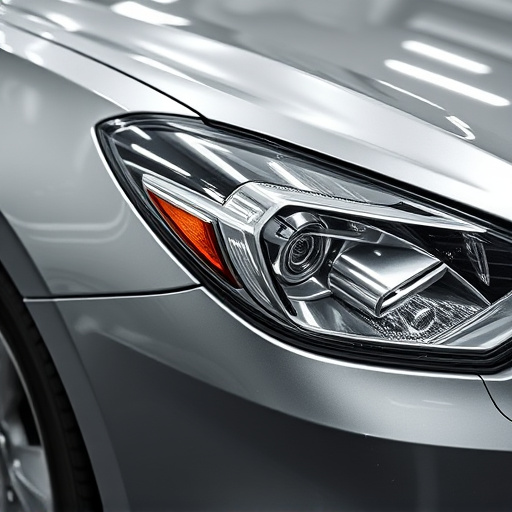
Waterborne paint technology has emerged as a game-changer in the realm of auto repairs and automotive painting. This innovative approach to paint application offers numerous benefits that are revolutionizing the way we maintain our vehicles. Unlike traditional paints, waterborne options are designed to be environmentally friendly, featuring water-based formulations instead of harsh solvents. This not only reduces the toxic fumes released into the atmosphere but also makes the painting process safer for auto body repair professionals.
One of the key advantages of waterborne paint is its superior performance and durability. These paints provide excellent adhesion, smooth finishes, and robust color retention even in challenging conditions. They are highly resistant to fading, chipping, and cracking, ensuring that vehicles maintain their glossy appearance for longer periods. Moreover, waterborne technologies offer faster drying times, streamlining the auto repair process, and enabling mechanics to complete jobs more efficiently, thereby enhancing overall customer satisfaction in automotive repair services.
Application Process: Techniques and Tools in Auto Repairs
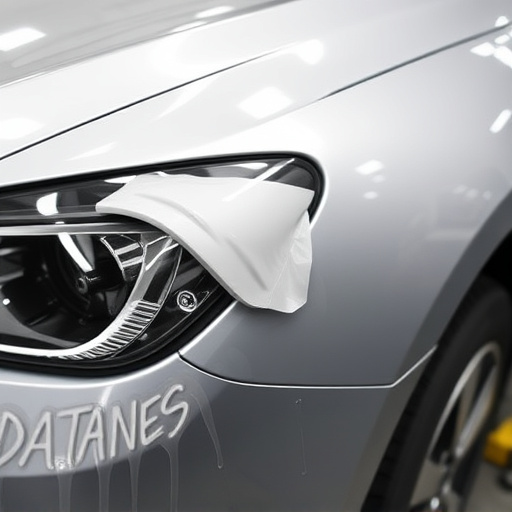
The application process of waterborne paint technology involves a series of precise steps and specialized tools tailored for auto repairs. This modern approach differs from traditional methods, utilizing water-based paints that offer superior environmental friendliness and improved performance. The process begins with meticulous surface preparation, ensuring all dents and damage are accurately assessed and corrected through techniques like sandblasting or using specialized tools for more subtle repairs, such as a car dent repair.
In the body shop services of a collision repair shop, professionals employ advanced equipment to apply layers of waterborne paint, often utilizing airless sprayers for consistent coverage. This method is not just efficient but also promotes faster drying times and enhanced durability compared to conventional paints. The final step involves careful curing, ensuring the paint bonds seamlessly with the car’s surface, resulting in a flawless finish that matches the vehicle’s original aesthetics.
Environmental Impact: Sustainability and Safety Considerations
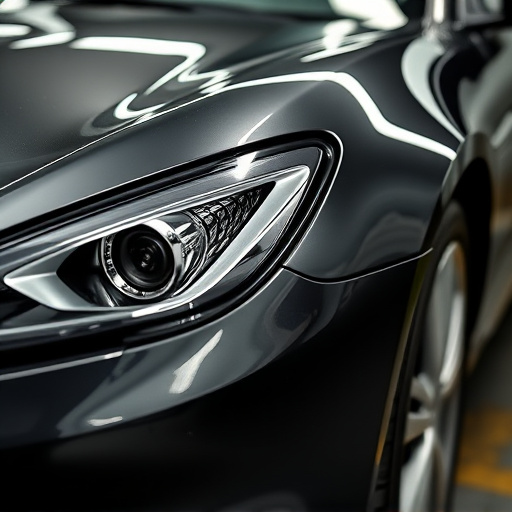
Waterborne paint technology is transforming auto body shop repairs, offering a more sustainable and safer alternative to traditional solvent-based paints. This eco-friendly approach significantly reduces environmental impact by minimizing volatile organic compound (VOC) emissions, which are known contributors to air pollution and greenhouse gas formation. By using water as the primary carrier for pigments and resins, these advanced paint systems offer excellent coverage while eliminating the need for harsh solvents, leading to a cleaner, greener workshop environment.
Moreover, waterborne paints provide enhanced safety for body shop services, including dent removal and repair processes. With lower toxicity and reduced fire risks associated with solvents, waterborne technology safeguards both workers and the surrounding community. This commitment to sustainability and safety underscores the growing importance of waterborne paint technology in modern auto repairs, contributing to a cleaner, healthier planet while ensuring the highest standards of care in body shop services.
Waterborne paint technology has emerged as a game-changer in auto repairs, offering both advanced performance and environmental benefits. By understanding its unique advantages, such as faster drying times, reduced VOC emissions, and superior durability, technicians can ensure high-quality finishes that stand the test of time. The application process, involving specialized tools and techniques, allows for precise, efficient repairs, while its environmental impact, with a focus on sustainability and safety, makes it an increasingly popular choice in today’s eco-conscious market. Embracing waterborne paint technology is not just a step towards better auto repair outcomes but also a contribution to a greener future.
